GERD and diet
Gastroesophageal reflux disease
20 % of the population suffers GERD, or acid reflux on any given day. American Gastroenterological Association says that about one-third of the population has GERD and that it could be higher as many people don’t go to the doctor for help.
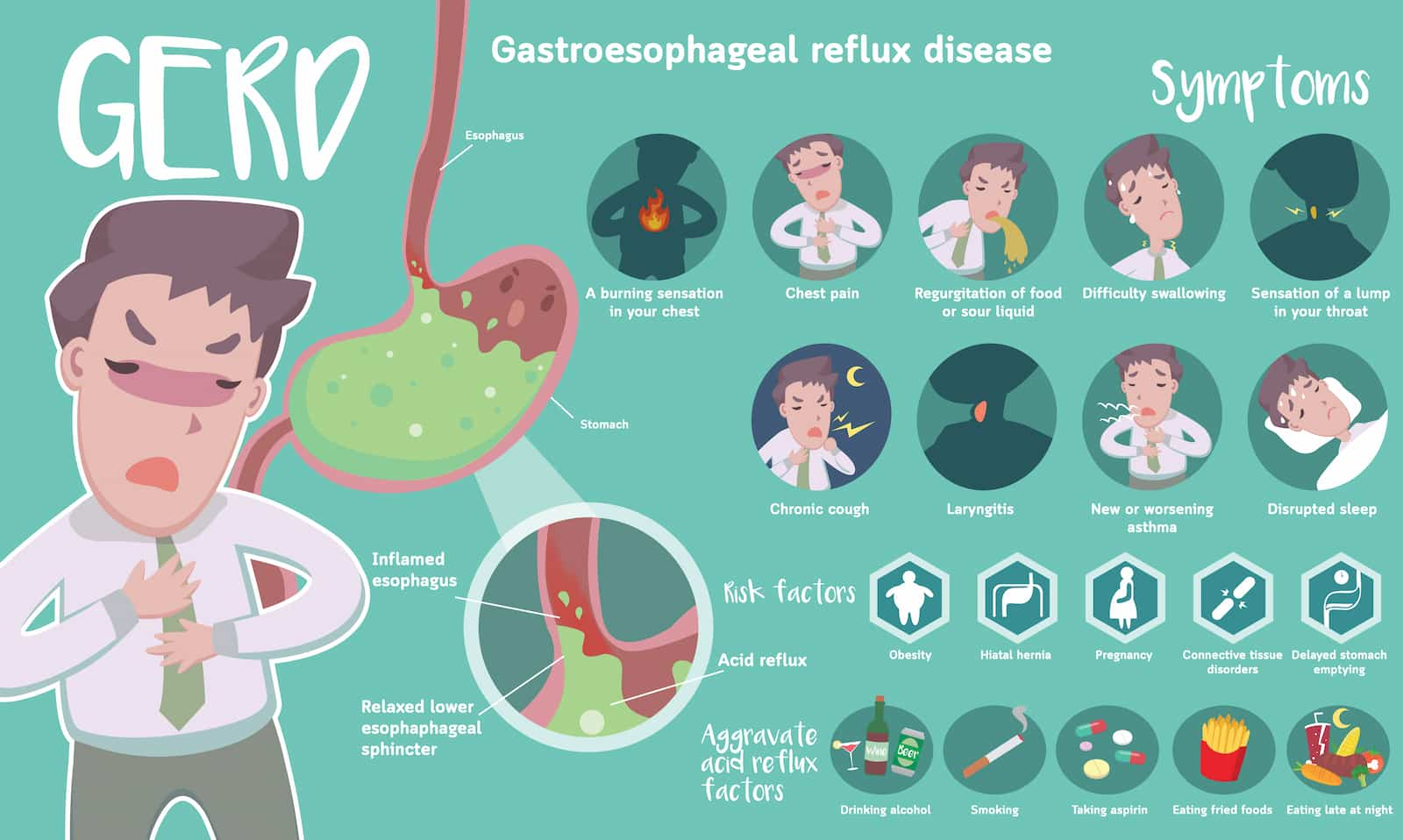
GERD – Gastroesophageal reflux disease (GERD) occurs when stomach acid repeatedly flows back into the tube connecting your mouth and stomach (esophagus). This backwash (acid reflux) can irritate the lining of your esophagus. Over time, and left untreated, repeated exposure of the esophagus to stomach acid can cause esophageal ulcers, difficulty swallowing, and even cancer.
The stomach has a special lining that protects it from being damaged by gastric acid, but the esophagus does not. As a result, when the esophagus is exposed to stomach acid, it becomes irritated and inflamed. This results in heartburn, a painful burning sensation in the chest or in the throat.
We often think of GERD as something that happens as we age. But the scary fact is it is growing, and getting younger. GERD grew +50% in the past decade. 1 in 4 teens now suffer GERD, which can lead to cancer. We found the risk of developing Barrett’s esophagus or esophageal cancer is about 30 times higher in children with GERD compared with healthy children.
The most common symptom of GERD is heartburn, which may last for several hours. It usually occurs after eating a meal or while lying down.
Other symptoms may include:
• Heartburn
• Regurgitation of stomach contents into the throat or mouth
• Bitter or sour taste
• Chest pain
• Nausea and/or vomiting
• Difficult or painful swallowing
• Hoarseness (sometimes laryngitis)
• Cough
• Sensation of a lump in the throat
Several factors can increase the risk of developing GERD, including:
• Weight gain, being overweight or obese
• Family history of GERD
• Hiatal hernia (condition in which the top of the stomach at the esophageal junction bulges into the chest)
• Smoking or inhaling secondhand smoke
• Eating fatty foods
• Drinking alcohol, coffee, or carbonated beverages
• Lying down within 3 hours of eating
• Taking certain medications including some antidepressants, calcium channel blockers (high blood pressure medications), sedatives, and some medications used to treat asthma.
"Diet plays a major role in controlling acid reflux symptoms and is the first line of therapy used for people with GERD.
https://www.memorialcare.org/blog/adult-disease-more-teens-are-getting
https://blog.uvahealth.com/2018/01/17/heartburn/
Foods commonly known to be heartburn triggers are high in fat, salt or spice.
When I worked on Mylanta and Pepcid AC – in the clinical trials we would feed people chili and red wine to spur them to have acid reflux so that we could test if the medications worked.
Other foods that can spike acid reflux include:
Fried food
Fast food
Pizza
Potato chips and other processed snacks
Chili powder and pepper (white, black, cayenne)
Fatty meats such as bacon and sausage
Cheese
Other foods that can cause the same problem include:
Tomato-based sauces
Citrus fruits
Chocolate
Peppermint
Carbonated beverages
Smoking
Caffeine
Acidic fruits like orange juice
Spicy foods
So what can we eat to avoid Acid reflux?
1. High Fiber Foods - Whole grains such as oatmeal, couscousand brown rice.
Root vegetables such as sweet potatoes, carrots and beets.
Green vegetables such as asparagus, broccoli and green beans.
High PH foods - Those with higher pH are alkaline and can help offset strong stomach acid. Alkaline foods include:
Bananas
Melons
Cauliflower
Fennel
Nuts
Drinking more water
Foods high in water like:
Celery
Cucumber
Lettuce
Watermelon
Broth-based soups
Herbal tea
How to help GERD
Avoid lying down for at least two hours after a meal or after drinking acidic beverages, like soda, or other caffeinated beverages. This can help to prevent stomach contents from flowing back into the esophagus.
Keep your head elevated while you sleep. Using an extra pillow or two can also help to prevent reflux.
Eat smaller and more frequent meals each day instead of a few large meals. This promotes digestion and can aid in preventing heartburn.
Wear loose-fitting clothes to ease pressure on the stomach, which can worsen heartburn and reflux.
Quit smoking. Smoking can increase the production of stomach acid and reduce the function of the lower esophageal sphincter, the muscle that keeps acid and other stomach content from reentering the esophagus. Smoking can also decrease the amount of saliva, which neutralizes acid produced by the body. Experts at NYU Langone’s Tobacco Cessation Programs can advise you on how to quit smoking for good.
Reduce excess weight around the midsection. This can ease pressure on the stomach. Such pressure can force some stomach contents back up the esophagus.
Some meds that are safe = Pepcid Ac can help reduce excess stomach acid.
Gaviscon – it creates a barrier or ‘raft’ at the top of the stomach to help the acid not go into the throat. That should help allow the esophogus to heal. Take it at night before bed. It is not uncommon for GERD to be worse in the morning. Solets see if by stopping eating 3 hours before bed, taking Gaviscon and sleeping elevated can help.
How Jump To Health can help
Add – Jump Fiber Pro – a prebiotic fiber with 2 clinically studied fibers. It helps boost the probiotic in the gut up to 45%. Studies show that this type of fiber is also good for acid reflux, and overall GI health.
A. Fiber Helps Quicken Digestion and Delayed Gastric Emptying. Diets low in fiber are associated with delayed gastric emptying and poor digestive Gastric emptying is controlled by the quantity and type of food we eat. In slow gastric emptying, acid reflux is due to increased intragastric pressure. Also, undigested food can cause burping, resulting in heartburn.
B. Fiber also helps the esophogus muscle releasing too soon or too often, by binding to nitrate oxide contained in those food. When the LES(lower esophogeal sphincter) becomes loosened, it may cause heartburn and other reflux issues.
C. Can help neutralize stomach acid.
D. Boost gut PH -
In Medical news today there was a good article on how prebiotic fibers can help restore a bacteria balance, which people with GERD tend to have. This can help then fight more GERD.
https://www.medicalnewstoday.com/articles/314690#treatment
Now not all fiber is created equal. We use 2 clinically studied prebiotic fibers that boost gut health, immune health, mood, regularity, satiety, which the studies show can help
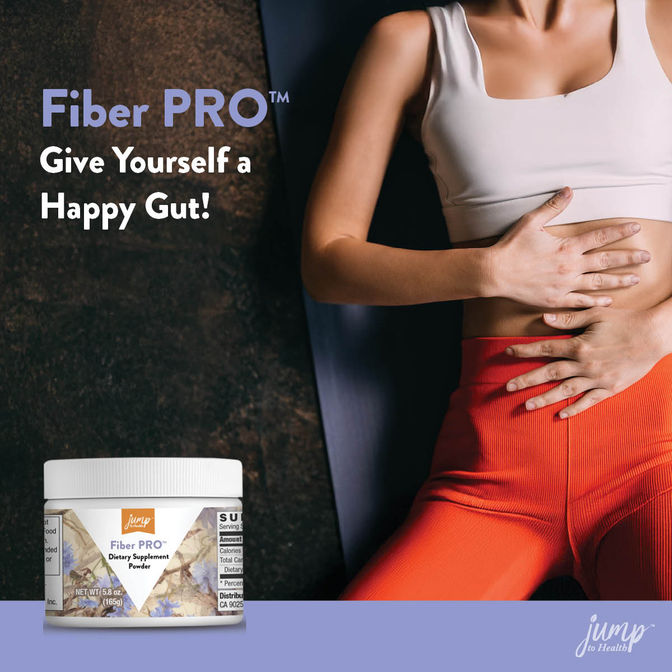
Fiber Pro https://www.fluid.app/s/2042e9
2. Jump To Health Core or VPro Shake
Lean protein can help minimize GERD symptoms as can digestive enzymes - and we have both in the Core (whey based) and VPro (Plant based shakes). There are many protein shakes on the market -but most are lower quality protein sources that may not be as absorbable into lean muscle, nor as easy to digest. Both our shakes use a hydrolyzed protein that makes it 99% absorobable, and easy to digest.
We include an Isolate and then a concentrate – so that the body can utilize them more efficiently. Most shakes use a simple whey or concentrate, or pea protein. Because we use higher quality proteins our shakes not only work better, they taste better too.
https://www.medicalnewstoday.com/articles/314690
Slowing digestion: Protein-rich foods take longer to digest, which can help slow down the emptying of the stomach. This delay reduces the likelihood of stomach contents and acid flowing back into the esophagus.
Promoting satiety: Protein promotes feelings of fullness and satiety, which can prevent overeating and reduce the consumption of acidic or trigger foods that worsen reflux symptoms.
Supporting muscle health: Adequate protein intake is essential for maintaining muscle mass. Stronger muscles around the lower esophageal sphincter (LES) can help prevent acid reflux by effectively closing off the stomach from the esophagus.
The JTH Shakes also have a full serving of a prebiotic fiber, clinically shown to boost probiotics in the gut up to 40%, naturally (and better than many probiotic supplements). This can help with GERD in many ways, including restoring a bacteria balance to the gut.
Both shakes use Aminogen™ a clinically studied digestive enzyme shown to aid digestion and protein absorption up to 45% into lean muscle and can help fight symptoms of GERD.
https://pubmed.ncbi.nlm.nih.gov/9558042/
Our sweetener – is good for those with GERD. Sugar may induce symptoms of GERD. Our sweetener is isomaltulose, derived from sugar beet but the way it is processed it does not spike insulin. It has been shown in clinical studies to help both Type 1 and Type 2 diabetics manage blood sugar levels, shown to help athletes have better performance, and has fat burning properties too.
The shakes are lactose free, gluten free, and soy free.
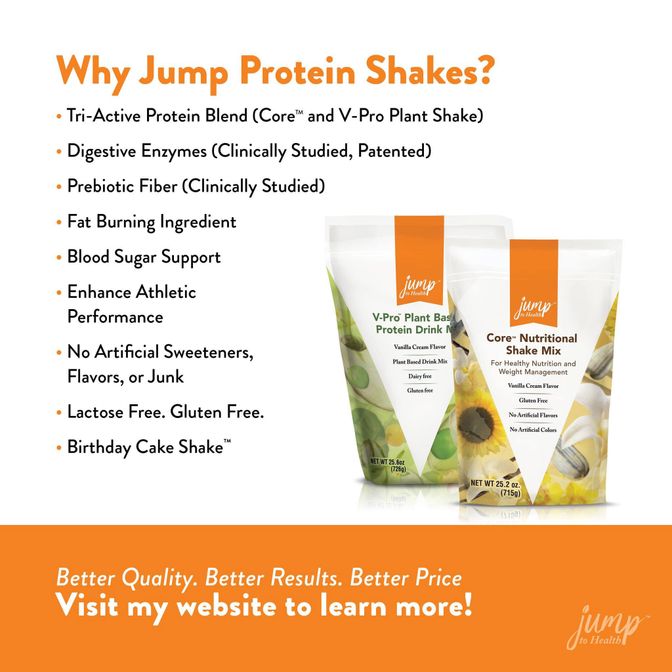
Jump to Health Protein https://www.fluid.app/s/aa95ed
3. Fruit Power, Vegetable Power – People with Gerd do not eat healthy fruits and vegetables because they cause gas, or they can spike reflux (acidic foods). Studies show that polyphenols are good for the gut, and they are good for GERD too.
Our fruit and vegetable supplement is unique in that we include Indole 3 Carbinol, which is derived from broccoli, brusselsprouts, kale. This nutrient has many health benefits and fights inflammation. It also helps fight GERD.
Indole-3-carbinol (I3C) is a natural compound found in cruciferous vegetables that has been studied for its potential health benefits, including its role in modulating estrogen levels, which could impact GERD symptoms
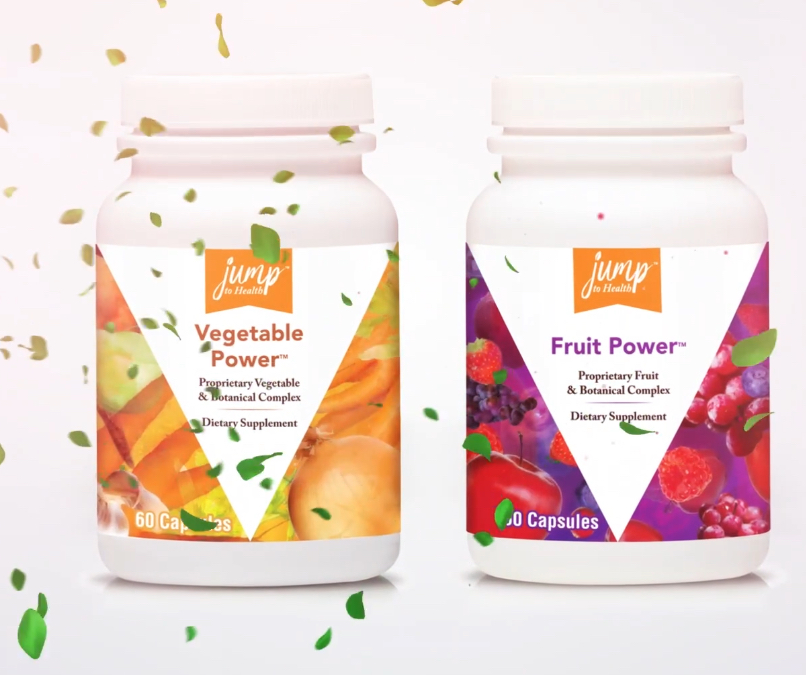
Fruit and Vegtable https://www.fluid.app/s/aa95ed
4. Gluco Support
The Gluco Support has several nutrients that help fight the absorption of fats, sugars and carbs in foods and meals. Taken before a meal, it can help lower the glycemic index of food, and also help shave calories from being absorbed, and fight the bloated feeling too.
One nutrient is Berberine – which has been shown to help fight GERD symptoms.
Berberine, an alkaloid found in several plants, may offer some benefits in managing GERD (gastroesophageal reflux disease) by potentially reducing inflammation and protecting against esophageal damage. Studies suggest it can alleviate reflux-induced airway hyperresponsiveness and suppress proinflammatory cytokines.
https://pmc.ncbi.nlm.nih.gov/articles/PMC3786780/
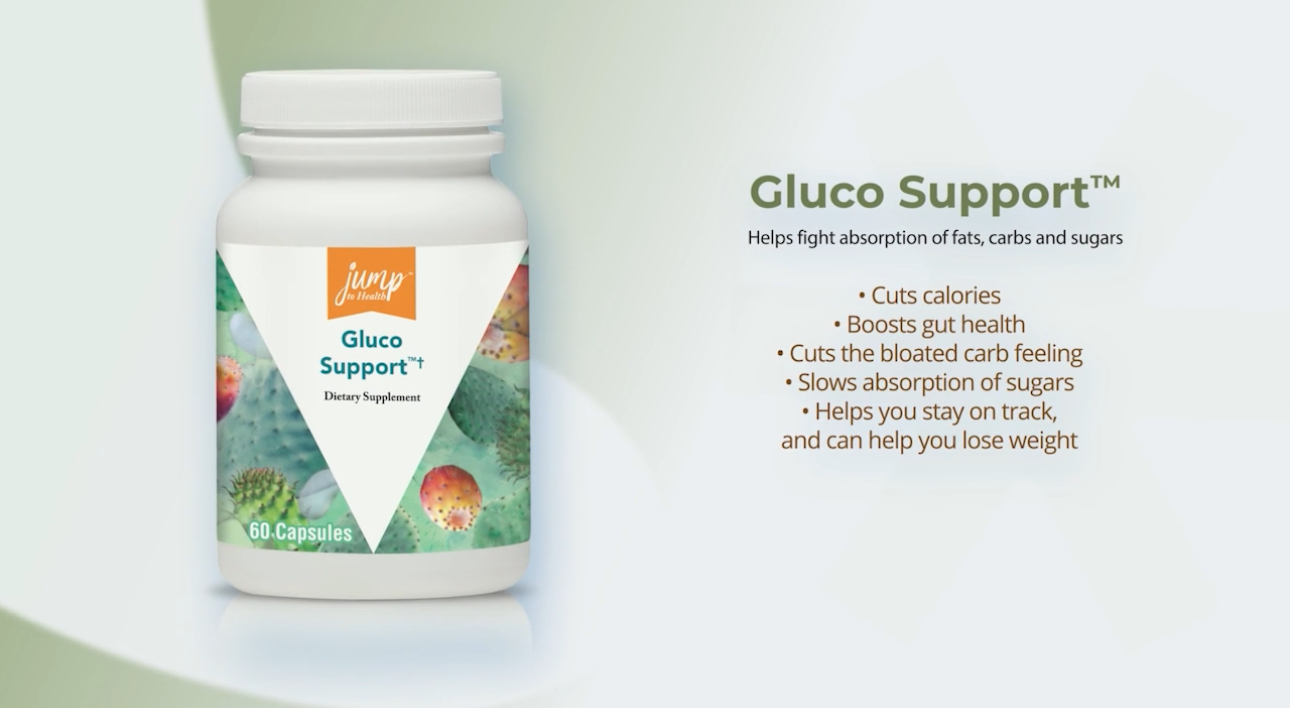
Gluco Support https://www.fluid.app/s/89709c
Eat smaller, more frequent meals to prevent overfilling the stomach.
Limit consumption of common trigger foods, such as caffeine, peppermint and chocolate. Some patients also need to cut down on fried, fatty or spicy foods.
Doctors may also recommend prescription or over-the-counter drugs that reduce the body’s production of stomach acid, including proton pump inhibitors and H2 blockers.
Time the last meal of the day at least three hours before bedtime so food can be digested while you’re still vertical and gravity helps keep digestive acids in the stomach. That no-eating period significantly relieved overnight GERD symptoms, a 2014 study published in the Journal of Gastroenterology and Hepatology found.
Exercise moderately.
Get enough sleep.
Home Page http://www.livelife-now.com

No comments:
Post a Comment